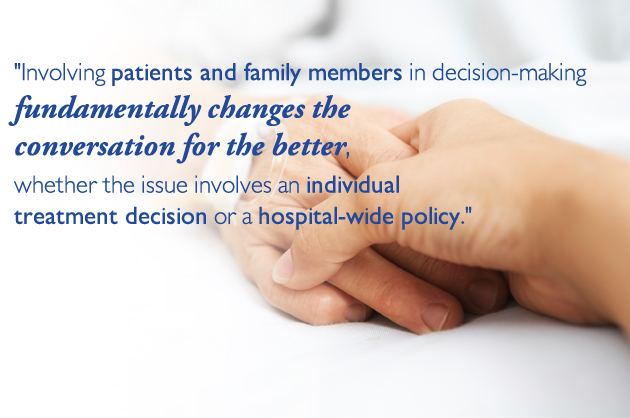Recently in one of The Johns Hopkins Hospital's intensive care units, a patient was dying from cancer and sepsis, and there was nothing that I, nurse Mandy Schwartz or anyone else could do to stop it. Yet as the patient’s family—two daughters and a husband—suffered at her bedside, Mandy saw their need for comfort, and she responded. Although she was busy with nursing tasks, she delved into the inner life of the patient and family. She helped the mother look as good as possible—hair combed, face washed, a clean gown and sheets. She made sure the patient was pain-free and not anxious. She hugged one daughter who was “a hugger” and avoided embracing the other daughter who wasn't. She sat with the family, listened and supported them in their anguish.
Schwartz gave comfort to the family because she cares and has true empathy. There’s no way that we could train her to care more. Yet too often, efforts by hospitals to improve the patient and family experience approach it purely as a technical challenge. For instance, we provide scripts to health care professionals to help them navigate various situations, from what to say when walking into a patient’s room to service recovery when things haven’t gone as they wished. We try to identify and broadly implement the practices that will best enhance patient experiences, such as rounding hourly in patient rooms to address pain management, bathroom visits and other needs.
These are well-intentioned and needed efforts to improve the patient experience. But they could very well backfire if we don’t simultaneously embrace the human element and tap into clinicians’ desire to be empathic healers and comforters. I fear that we send the wrong message, for instance, when we simply hand detailed scripts to staff in low-performing units or hospitals. Subtly, we’re labeling them as someone who does not care adequately for patients, and that they need to be taught how to do better. Here, we say, mouth these words and the patient and loved ones will believe that you care. Likewise, hourly rounding and other interventions will not be effective if we simply treat them as a box to be checked off.
Words are important, of course. And caregivers can certainly learn how to insert key words and phrases into their conversations with patients to show they care and open the door to more meaningful dialogue. However, health care is too complex and nuanced for a lengthy script to be useful.
Clinicians witness the extreme highs and lows of other people’s lives, yet like any job this becomes our everyday reality, with mundane documentation, meetings and bureaucracy. It’s easy to forget that “just like me” someone may be in the hospital for the first time, that their family members must take off work for an extended period of time to be with them, or that the outcome of their stay is a turning point in their family’s future.
When we lose sight of the connection with our common humanity, with our patients’ suffering, we can fail to connect with our patients’ needs for empathy as well as healing. We can get so caught up in the tasks that we need to do that we don’t stop to care. While we think we are still delivering good care, patients perceive our frenzied state and decide it’s wiser not to raise valid concerns.
What can help us to reverse this?
There’s more than a single thing, but one powerful approach involves coaching caregivers on their interactions with patients and loved ones. On a surgical unit in The Johns Hopkins Hospital, scores on HCAHPS—the national post-discharge survey sent to patients after discharge—were far below national averages. In their written responses, some patients said that they felt unwelcome to raise concerns, or that staff made them feel like a burden.Read More »“Just like me”





 One of the most exciting things about working in patient safety and health care quality is that it’s not solely about advancing science or applying performance improvement methods. It is also about the excitement of being part of a social movement that is changing the culture of medicine—putting patients at the center of everything, sharing errors in the hopes of preventing future ones, and confronting hierarchies that stifle communication and innovation.
One of the most exciting things about working in patient safety and health care quality is that it’s not solely about advancing science or applying performance improvement methods. It is also about the excitement of being part of a social movement that is changing the culture of medicine—putting patients at the center of everything, sharing errors in the hopes of preventing future ones, and confronting hierarchies that stifle communication and innovation.